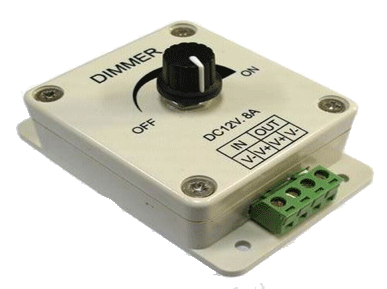I finally got my stir plate together today. It's not pretty (I can't solder for shit) but I'm happy with it.
My experiences:
I initially purchased a PVM LED dimmer like this one
But I was unhappy with it as it caused the computer fan I was using to emit a constant whine as the pulses were sent to the fan at low speed.
With my limited electronics knowledge I removed the control knob inside (potentiometer) and twisted the wires together for a quick circuit. My 9V 200mA AC adaptor made short work of frying the potentiometer so I figured more research was required.
Lethal Corpse seemed to know what he was on about, and others had followed his recommendations with success so I collected the necessary parts, and a cheap soldering iron ($13) from Jaycar and sat down to it.
LethalCorpse said:
updated diagram to make it a bit neater and include the new values.
Jaycar parts:
LM317T - ZV1615
5k linear pot - RP3508 or RP7508
knob to suit -
pick one. Not the ones which say "spline" or suit 9mm pot
680ohm resistor - RR0568
switch - pick one. Any will do, so long as it's a latching type, not momentary. Pushbuttons, toggle switches, rockers, etc.
10u cap - RE6070
100n cap - RC5360
Perhaps 2 hours later (did I mention I can't solder very well?) I was done. I haven't mounted it yet, but the circuitry works, and from my experiments with the LED dimmer I know that the fan doesn't need to spin very fast, and that the width of the magnets, and proximity to your vessel and hence your stir bar, are very important.
I bought this 30x16mm stir bar (
http://www.ssapl.com.au/store/001630.html)%C2 Science Supply Australia in Mitcham. The guy on the phone was reluctant to sell me just one, so whilst I wanted to push him to ask if it could be posted, I settled for making a trip out there.
It seems to be a good size, although the jar I am using has a convex base which makes for an unstable stir bar as the speed increases.
I purchased round 8x5mm rare earth (neodymium) magnets which seem to do the job, but I might upgrade to something bigger as they're only just coping. Stacking them on top of each other gives a stronger field, but at the expense of having to mount the fan lower which isn't ideal. Does anyone know if mounting them side by side will be effective? They definitely won't sit like that by themselves, but I figure I could glue them down it'll work.









